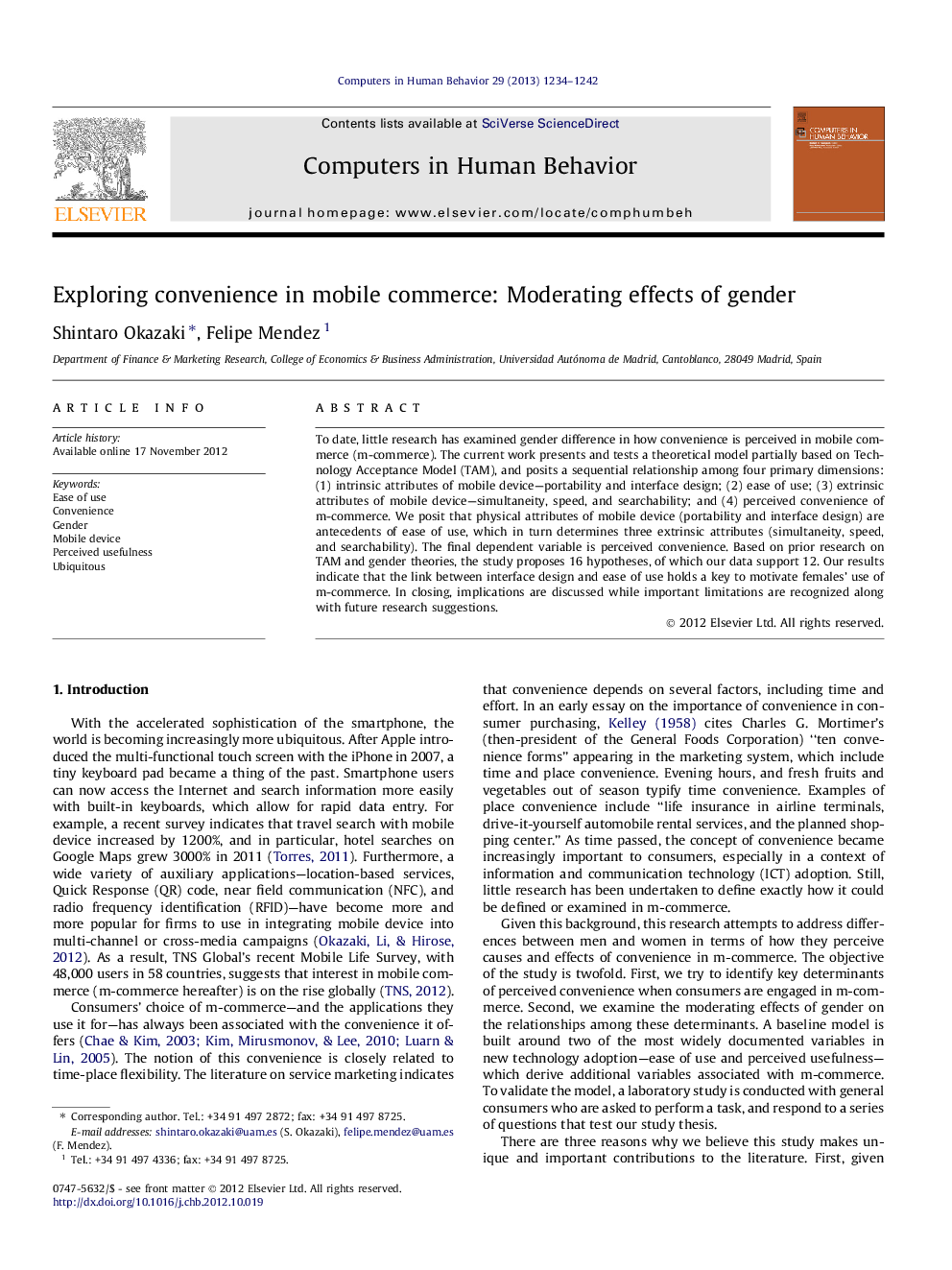| Article ID | Journal | Published Year | Pages | File Type |
|---|---|---|---|---|
| 351258 | Computers in Human Behavior | 2013 | 9 Pages |
To date, little research has examined gender difference in how convenience is perceived in mobile commerce (m-commerce). The current work presents and tests a theoretical model partially based on Technology Acceptance Model (TAM), and posits a sequential relationship among four primary dimensions: (1) intrinsic attributes of mobile device—portability and interface design; (2) ease of use; (3) extrinsic attributes of mobile device—simultaneity, speed, and searchability; and (4) perceived convenience of m-commerce. We posit that physical attributes of mobile device (portability and interface design) are antecedents of ease of use, which in turn determines three extrinsic attributes (simultaneity, speed, and searchability). The final dependent variable is perceived convenience. Based on prior research on TAM and gender theories, the study proposes 16 hypotheses, of which our data support 12. Our results indicate that the link between interface design and ease of use holds a key to motivate females’ use of m-commerce. In closing, implications are discussed while important limitations are recognized along with future research suggestions.
• The study explores gender difference in how convenience is perceived in m-commerce. • The intrinsic attributes of mobile device are portability and interface design. • The extrinsic attributes of mobile device are simultaneity, speed and searchability. • Males tend to associate ease of use with the intrinsic attributes of mobile device. • Link between interface design and ease of use has special relevance for females.
